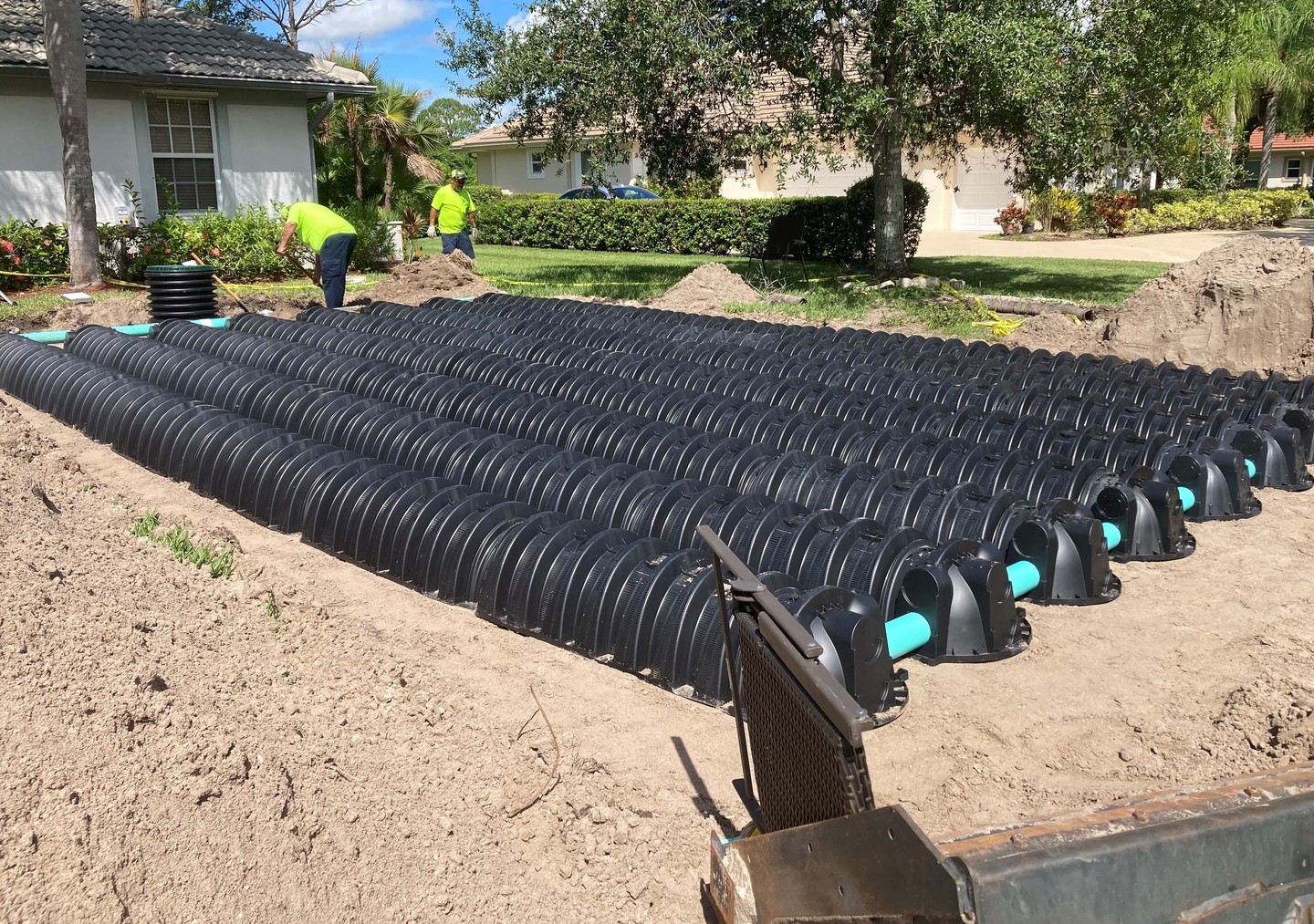Key points
Contents
- 1 Key points
- 2 Definition and Purpose of a Leach Field
- 3 The Role of Leach Fields in Septic Systems
- 4 Considerations in Design and Layout
- 5 Excavation and Preparation of the Site
- 6 Laying Pipes and Aggregate
- 7 Covering and Protecting the Leach Field
- 8 Understanding Local Regulations and Codes
- 9 Ensuring Environmental Protection
- 10 Impact on Groundwater and Surrounding Land
- 11 Innovations in Leach Field Technology
- 12 Frequently Asked Questions (FAQ)
• Wastewater Treatment Component: A leach field, also known as a drain field or septic field, is an essential part of a septic system, used in places without connection to main sewage pipes. It is responsible for removing contaminants and impurities from the liquid that emerges after the sewage is processed in the septic tank.
• Soil Filtration Function: The leach field operates by dispersing the effluent from the septic tank into the soil. The soil acts as a natural filter, where bacteria break down pathogens, and the soil matrix removes harmful substances, thus treating the wastewater before it percolates further into the groundwater or waterways.
• Design and Maintenance Importance: The effectiveness and longevity of a leach field depend on proper design, installation, and regular maintenance. Factors such as soil type, field size, and household wastewater volume must be considered to prevent system failure, which can result in environmental contamination and costly repairs.
Definition and Purpose of a Leach Field
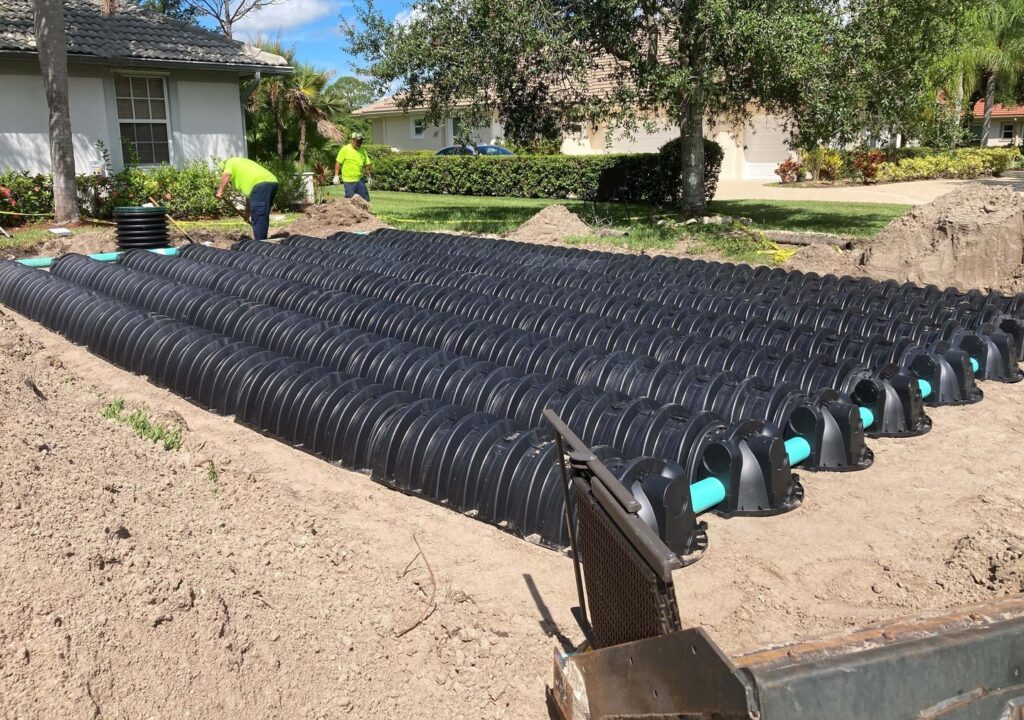
A leach field, commonly known as a ‘drain field,’ is an area kitted out with perforated pipes and covered by several feet of soil. The prime directive? To distribute effluent from the septic tank evenly into the earth. Here’s where Mother Nature flexes her powers: as the wastewater drifts down through the soil, pesky contaminants are stripped away, making it safe enough to join back up with groundwater resources without causing pollution or health risks.
The Role of Leach Fields in Septic Systems
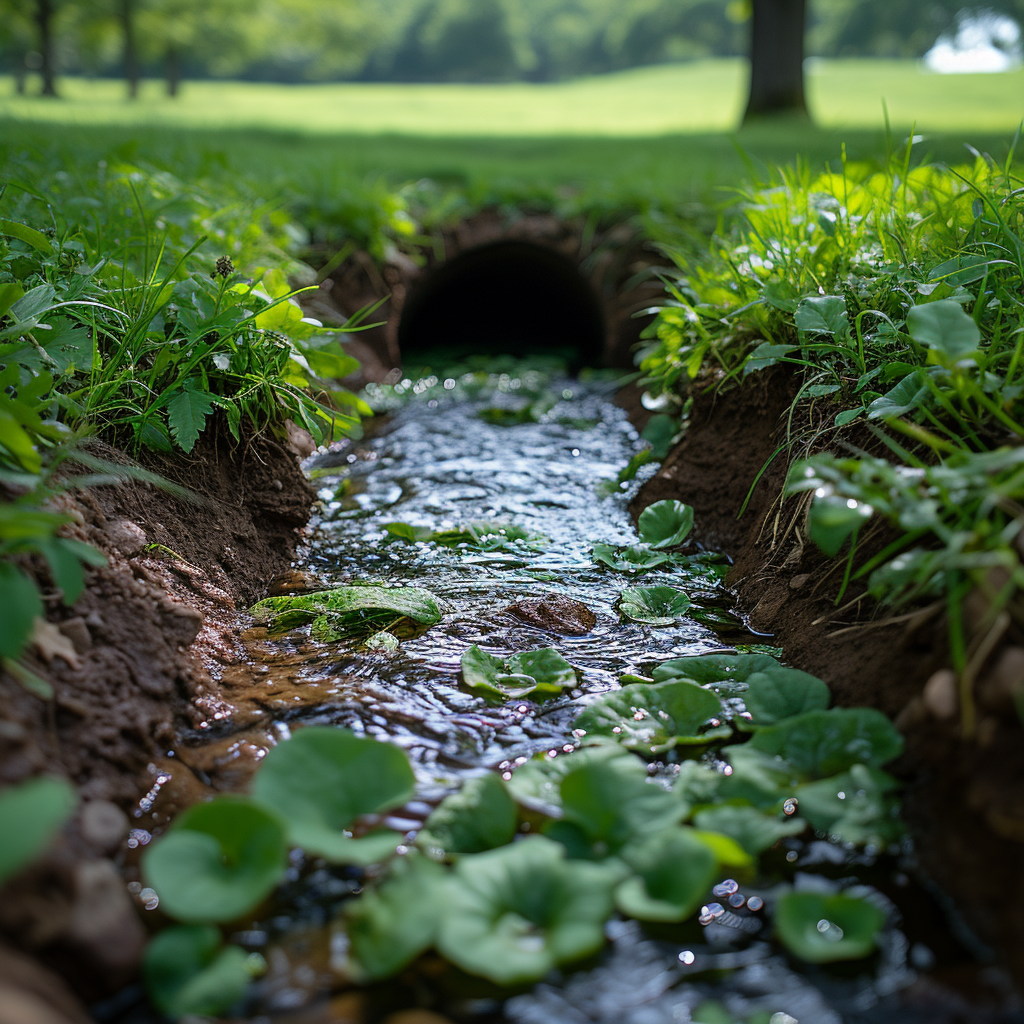
Sneaking away beneath our lawns, leach fields lie at the heart of any standard septic system’s operation. Their job description is pretty fascinating – these fields take on all effluent from our homes once the septic tanks have done their bit. Just like a coffee filter does its magic, soils surounding this setup purify liquid waste further, removing harmful bacteria, viruses and nutriens before they can invite themselves into nearby watersheds or drinking sources. Without this unsung saviour working flawlessly day-in and day-out, our environment and health would be in quite a pickle!
In short terms, a functioning leach field doesn’t just contribute to environmental sustainability; it’s downright indispensable for preventing ground and surface water contamination. Proper planning, installation, and maintenance mold them into reliable partners for any home not hitched to municipal sewage lines.
Perforated Pipes
You can’t talk about leach fields without mentioning the critical role played by perforated pipes. These pipes are basically the highway system for wastewater on its journey from your septic tank out into the vast expanse of the leach field. Riddled with holes, they let the wastewater trickle out slowly, which is essential because you wouldn’t want all that water rushing out at once – it’s more of a marathon than a sprint.
Gravel or Aggregate
Next up, we’ve got the gravel or aggregate. It’s not just any old rock; it’s like the partner for those perforated pipes. The gravel provides a crucial supporting role creating space around them. This isn’t just any space though; it’s specifically designed to prevent dirt from clogging up the works while simultaneously making sure that water disperses effectively throughout the soil – sort of like how a good base guitar keeps a band grooving along smoothly.
Soil Interface
Last but definitely not least, let’s talk dirt – or more formally, the soil interface. Picture this: after our wastewater has meandered through perforated pipes and danced around bits of gravel, it finally makes contact with the soil. This is where Mother Nature steps in, performing her purification magic. The soil acts kinda like a filter, sieving out nasties as water integrates with groundwater or travels onwards into further ecological cycles. But don’t be fooled by its simplicity – getting this interface right is an art form in itself!
In summing up this little walk through the components of a leach field, you’ve got your perforated pipes working as conduits for flow, your gravel ensuring nothing gets gummed up and keeping things moving along nice and easy, and then there’s the soil – nature’s own purification system. They work together like clockwork – assuming everything’s installed correctly, of course! Y’see, if any one piece falls out of tune, then you might find yourself in quite the pickle.
Considerations in Design and Layout
When you’re planning a well or septic system, there’s quite a bit to ponder, isn’t that right? We’ve got to think about the space and how it’ll all fit together. First off, ya gotta make sure there’s enough room for both the well and the septic system – they need their personal space, so to speak, to prevent cross-contamination. Besides that, figure out where everything else will be going – like your house and any other buildings you might have up your sleeve. Now, location’s key here. You want the septic tank down gradient from the well to keep things flowing smoothly.
Size and Capacity of the Leach Field
The size of that leach field – it’s not cookie-cutter; it’s more like tailoring a fancy suit – it needs to fit just right. Size is based on two biggies: how much water you use and how fast Mother Earth can soak it up (a.k.a., percolation rate). Get yourself a good idea of your household’s water usage habits – shower fanatics versus sprinkle ninjas can make a big difference, ya know?
Site Evaluation for Leach Field Placement
Before you go laying out your leach field, you’ll want to do some serious poking around at that site. The slope is pretty crucial – too steep and you’ll get run-off too fast; too flat, and drainage slows down to a sluggish pace. What about rocks and roots? They’re real party poopers for proper placement – avoid ’em.
Impact of Soil Composition and Percolation Rate
Who knew dirt could be so engaging? Turns out soil composition is kind of a big deal – some soils treat wastewater better than others. Sandy soils often ace this test since they drain quicker. Clay soils? Not so much; it’s too thick, which slows down percolation. Speaking of percolation rates. Too slow (’cause of dense soil) or too fast, each comes with its own headache.
Remember folks, there are no do-overs with this; botch it up, and it’ll haunt you like bad plumbing. So pay attention, plan wisely, and consult with pros who know their way around this trench!
Excavation and Preparation of the Site
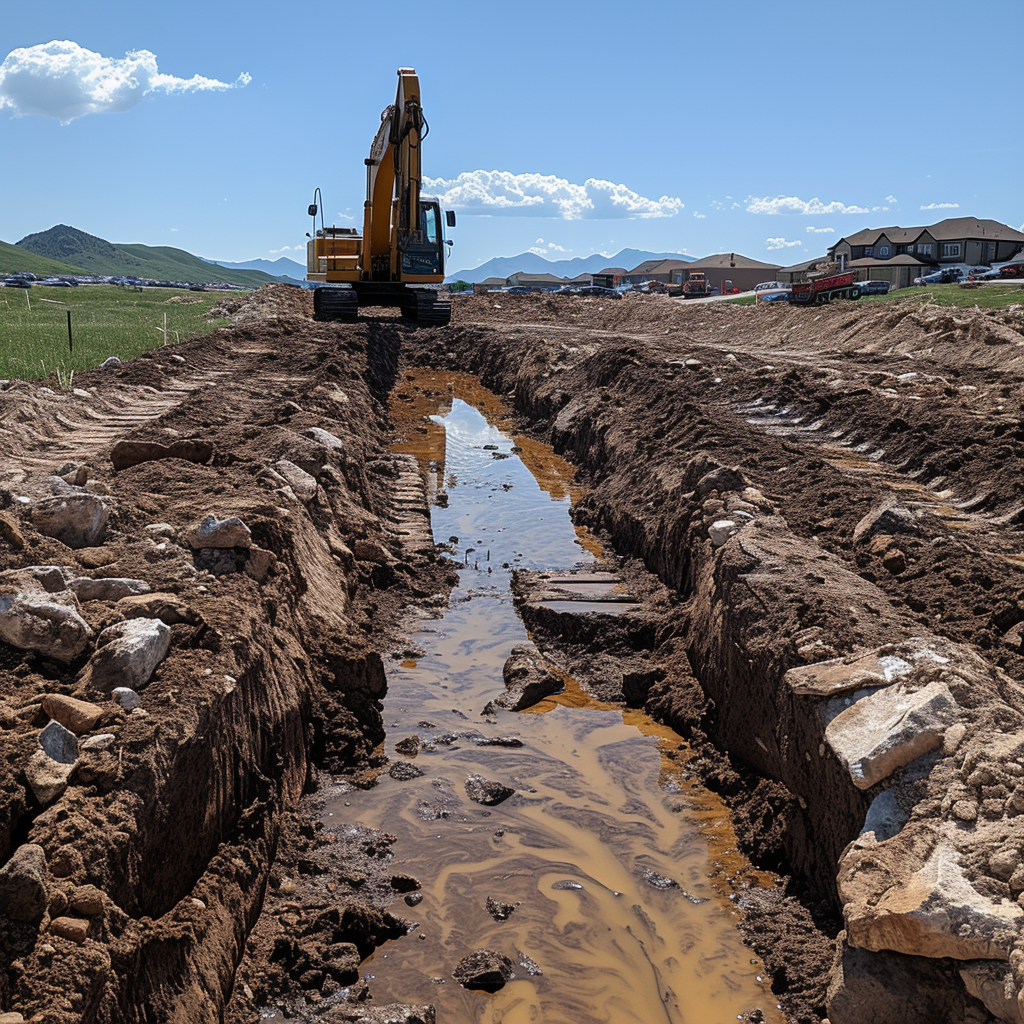
In kicking things off, we’d be wise to remember that a well-thought-out game plan is crucial. Now, first things first, you’ll need to get your hands dirty by excavating the site where your septic system will call home. This isn’t just about digging a hole; it’s an art form of making sure dimensions are spot on and that the land is sculpted precisely for what comes next. And let’s not forget, during excavation, take a little care around those underground utilities—we wouldn’t want any shocking surprises now, would we?
Laying Pipes and Aggregate
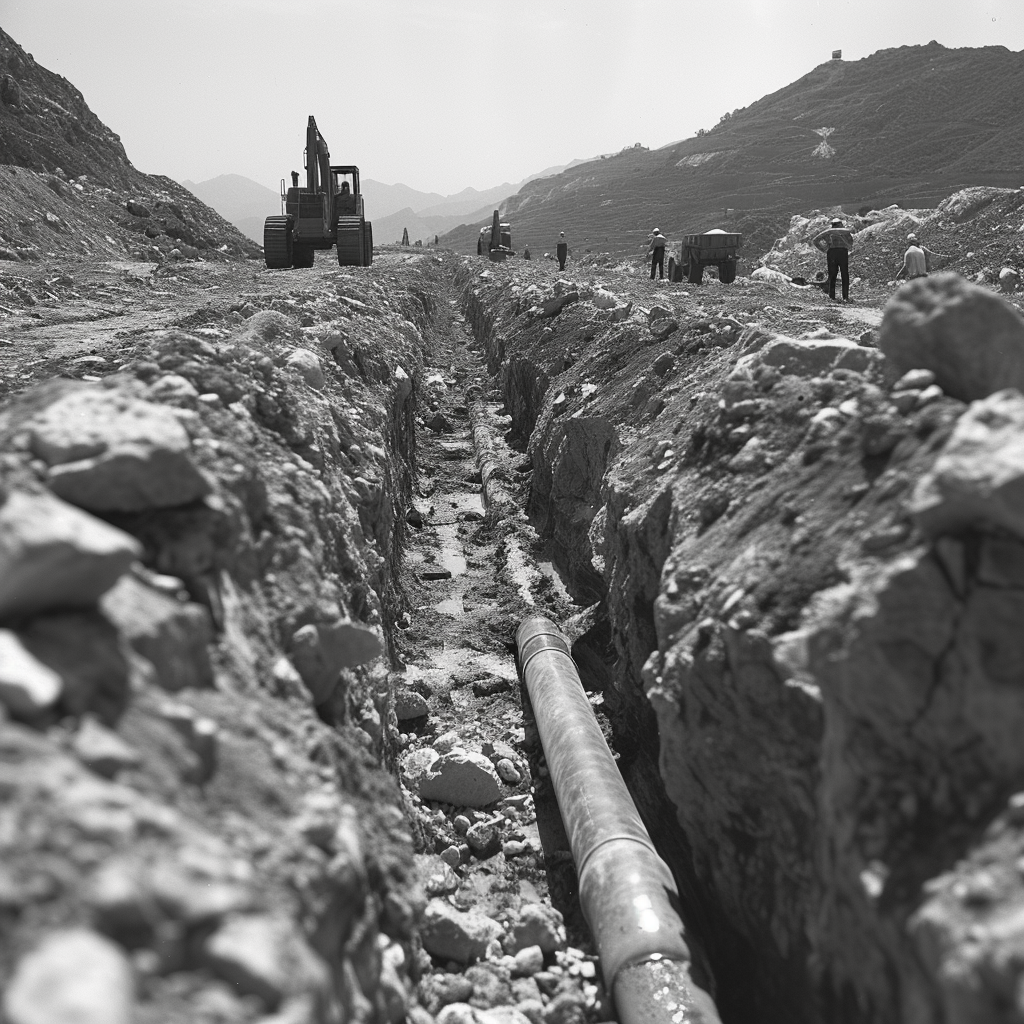
Moving along, laying the pipes might seem like a piece of cake, but look closer—you gotta make sure they’re all snug in their bed of gravel or stone. Why? ‘Cause these guys play taxi for wastewater from your abode right down to your septic tank. Precision here is key; a slight slant ensures everything flows down without a hiccup. Next up, aggregate—it’s more than just rocks. Think of it as the unsung hero that keeps liquid waste from partying too hard with groundwater!
Covering and Protecting the Leach Field
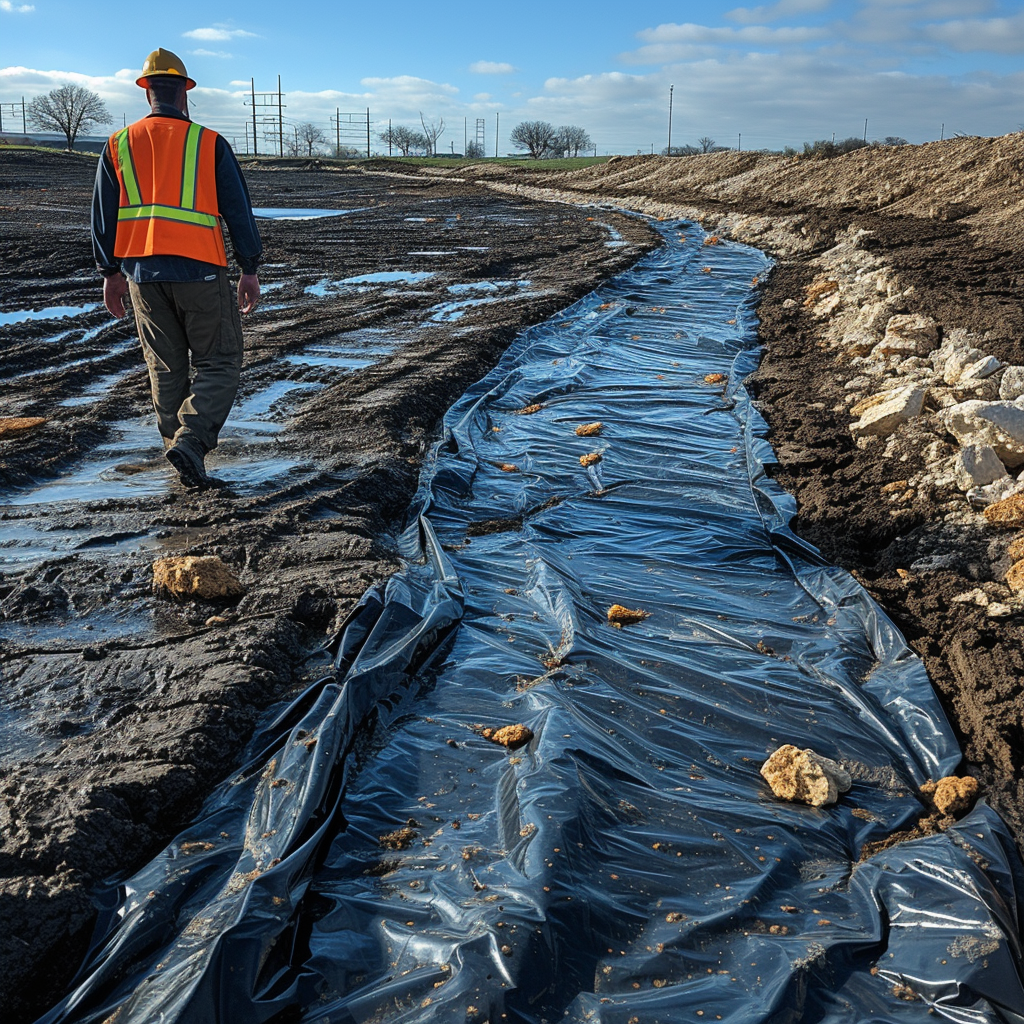
Last but definitely not least is the grand finale—covering up what you’ve crafted and shielding that leach field like it’s precious treasure. You wouldn’t throw a wool coat in a puddle; similarly don’t slap any ol’ dirt back on top. The right kind just might save you from headaches down the road. Then there’s protection—because even leach fields need some TLC once in a while, like keeping heavy objects far away as if your lawn was a no-drive zone.
It goes without saying that this isn’t your average weekend DIY project. Between dodging buried cables during excavation and playing matchmaker with pipes and gravel, there’s plenty to keep one busy—and who’d have thought those underground tasks could be so complex? Chuck in the crucial final touches to safeguard the leach field, and you’ve got yourself quite the adventure before flipping the switch on your new wastewater system.
When it comes to the maintenance of leach fields, it’s essential to routinely inspect and maintain your system to prevent any untimely headaches that could arise from neglect.
Regular Inspection and Upkeep
Routine checks are a no-brainer when you’re aiming to keep your leach field in top-notch condition. It’s recommended to scedule inspections every couple of years, or annually if your household usage is heavy. During these checks, professionals should survey the tanks and the drain field for any potential issues. Moreover, they’ll typically pump your tank – a task that’s not cut out for the DIY enthusiast but best left to those with expertise.
Avoiding Common Problems and Misuse
Steering clear of problems with leach fields isn’t rocket science; it simply requires some mindfulness about what goes down the drain. For starters, never treat your toilet like a trash can—stuff like coffee grounds, paper towels, and other bulky materials are big no-nos. They can block pipes faster than you’d think! Also, keep an eagle eye on household chemicals; excessive use can disrupt the delicate balance of bacteria in your septic system, rendering it less effective.
Signs of Leach Field Failure
The last thing anyone wants is a leach field waving the white flag of surrender. Keep your eyes peeled for soggy ground or greener grass around the drainfield area – often telltale signs that all’s not well beneath the surface. If bad smells or slow drainage accompany this curious change in landscape scenery, it’s high time to call in the cavalry (i.e., a professional) before things go south. Remembering these tips could save you from a world full of problems—not to mention a lighter wallet!
Understanding Local Regulations and Codes
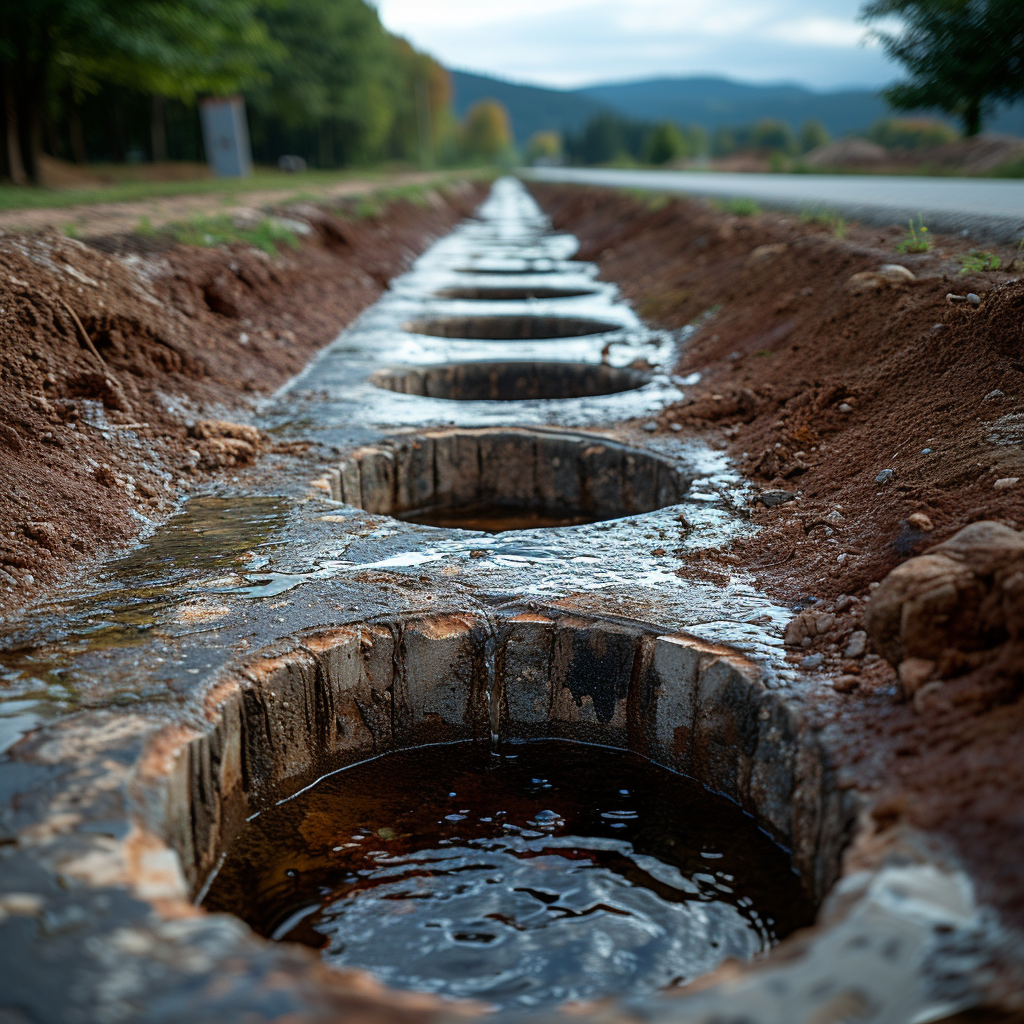
It goes without saying, grasping the intricacies of local regulations and codes is crucial when installing wells or septic systems. Different areas have diverse sets of guidelines carved out to ensure that construction meets specific safety standards. Prospective builders need to knock on the doors of local health or building departments to get their hands on the latest regulations. This may look like a hassle, but it’s a cakewalk compared to dealing with legal headaches later on. Whether you’re breaking new ground or renovating, a little heads-up from local experts can steer you clear of any future trouble.
Ensuring Environmental Protection
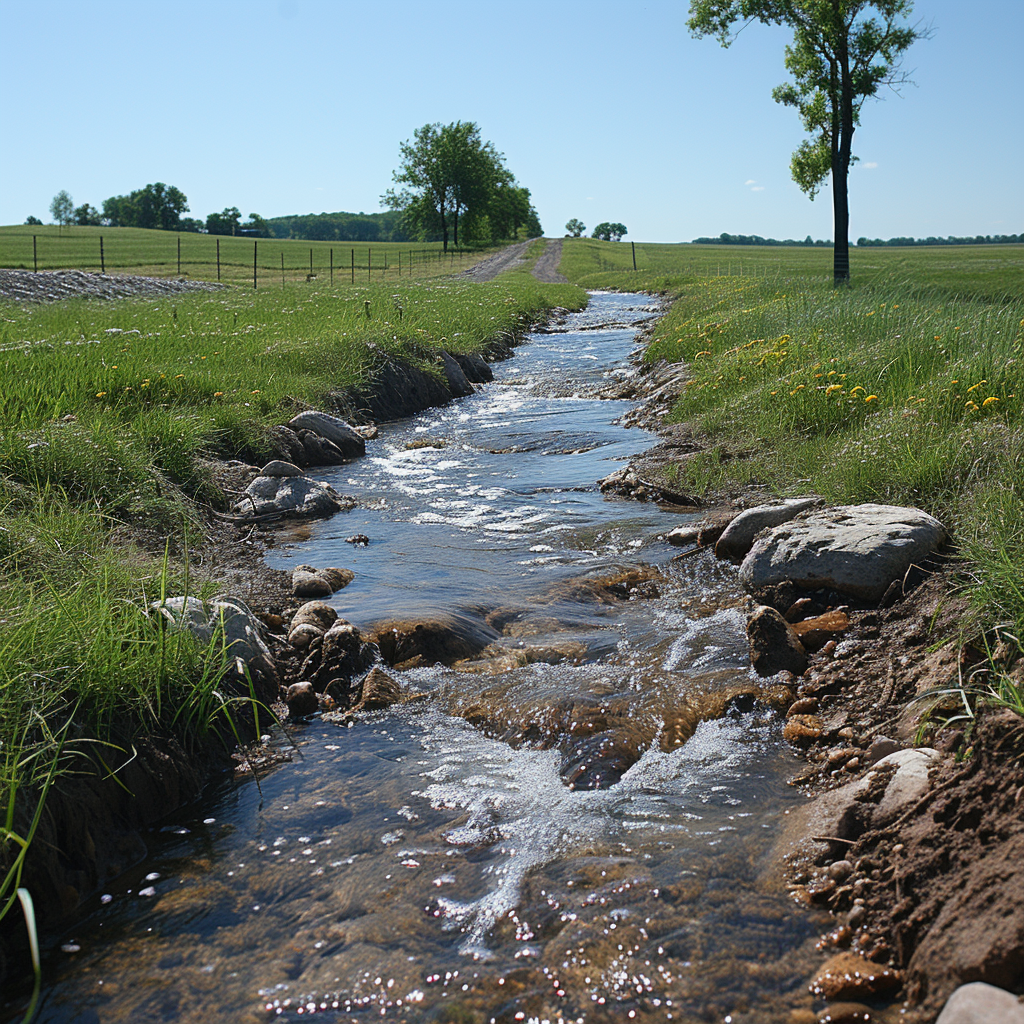
Now here’s the kicker – playing by the rules isn’t just a bureaucratic formality; it’s vital for keeping Mother Nature smiling too. By tailoring your construction plans to environmental demands, you’re basically giving back to the earth. A well-planned sewage treatment plan and a cleanly drilled well can make all the difference. Here’s the catch, though – slacking off in this area might lead not only to penalties but also hefty cleanup costs down the line. After all, what’s better than knowing you’ve done your bit for blue skies and green fields?
Impact on Groundwater and Surrounding Land
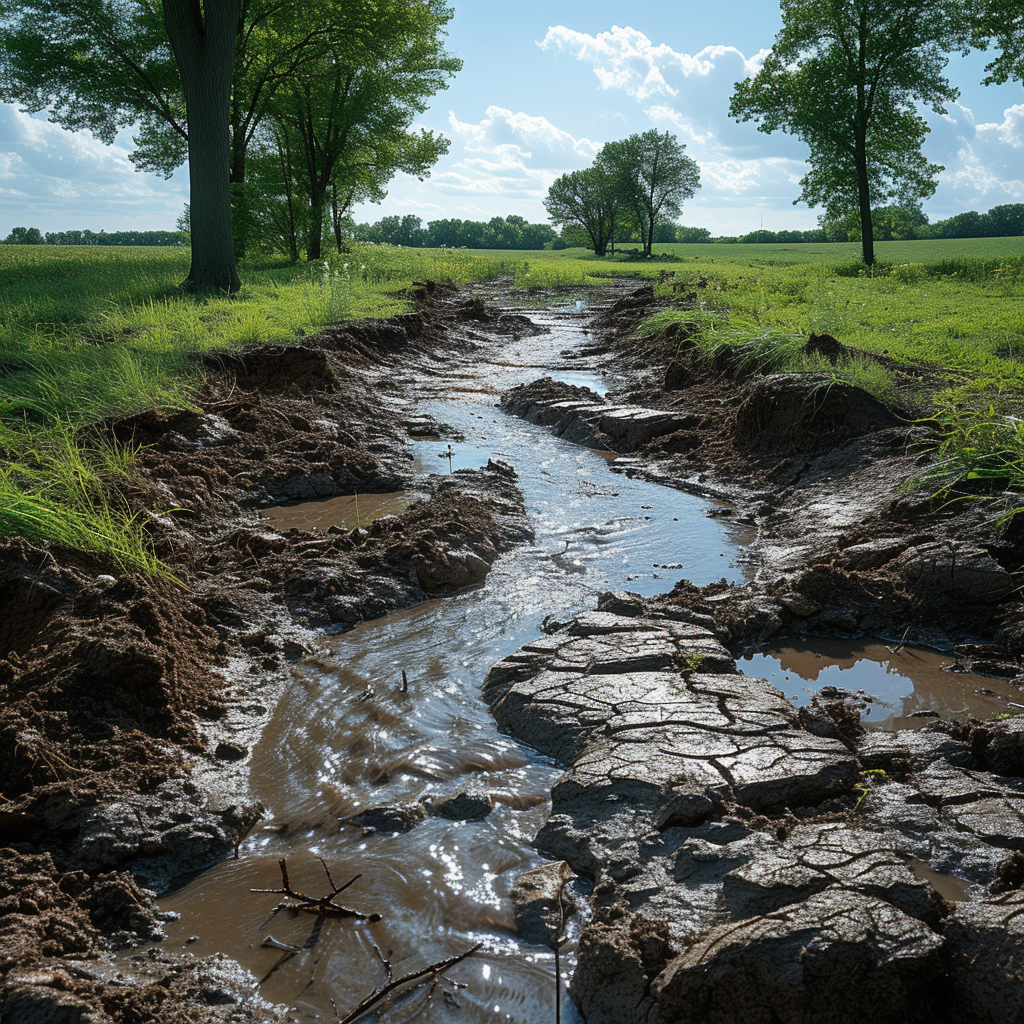
Now let’s talk about avoiding ruffling feathers with Mother Earth herself. The reality is that improper septic systems can seriously pollute groundwater; we’re talking oil-on-water type scenarios here – not pretty! The ripple effect causes problems for wildlife and humans alike – no one’s immune here. And if you think that’s bad, wait till runoff from poor construction wreaks havoc on your neighbors’ land—that’ll really rain on your parade! Let’s face it, taking steps to minimize any negative impact upfront can save you from a world of hurt—literally.
When it comes to figuring out what’s up with your leach field, a few telltale signs can point to trouble. Slow drainage, odd odors, soggy ground, or unusually green grass over the leach area? These symptoms might mean your leach field’s got issues. But don’t jump to conclusions; you’ll need a pro to take a peek and confirm your suspicions. They’ll check for clogs or damage in the pipes, inspect the condition of the septic tank, and may even do some soil testing to see how well it’s absorbing that wastewater.
Diagnosing Leach Field Malfunctions
To get to the heart of leach field woes, start by taking stock of the situation. Look for backups in your plumbing fixtures—that’s often where trouble first shows. If things don’t clear up after a good plunging or snaking, the problem might be further down the line. Your best bet is to call in a seasoned septic technician who can perform a more thorough inspection using specialized tools and techniques that you just won’t have at home. This way, you’ll know exactly what you’re dealing with before diving into repairs.
Methods for Repairing or Rejuvenating a Leach Field
If you’ve run into minor hiccups with your leach field, fear not! There are a couple tricks you can pull outta your hat for repair or rejuvenation:
– Start with the basics: Regular maintenance like pumping out that septic tank can go a long way.
– Let’s talk biology: Adding bacteria or enzymes can help break down waste and unclog your system.
– When things are real bad: Sometimes physically cleaning or jetting the pipes is needed when there’s serious buildup.
– Last resort: If you’re really tucked in a corner, introducing new soil or gravel can revitalize an area that ain’t absorbing like it should.
When to Replace a Leach Field
Alrighty, let’s say you’ve tried all the fixes but nothing’s doing the trick—it might just be time to wave goodbye to that old leach field. There’re no two ways about it; if repairs aren’t cutting it or if you’re constantly battling backups and breakdowns, consider this your sign to opt for replacement. Especially if your system’s older, sometimes starting fresh is your only option.
A seasoned professional can guide you through choosing whether it’s time to replace the leach field. Don’t sweat it; they’ll help ensure your next one will stand the test of time (and flushes).
Innovations in Leach Field Technology
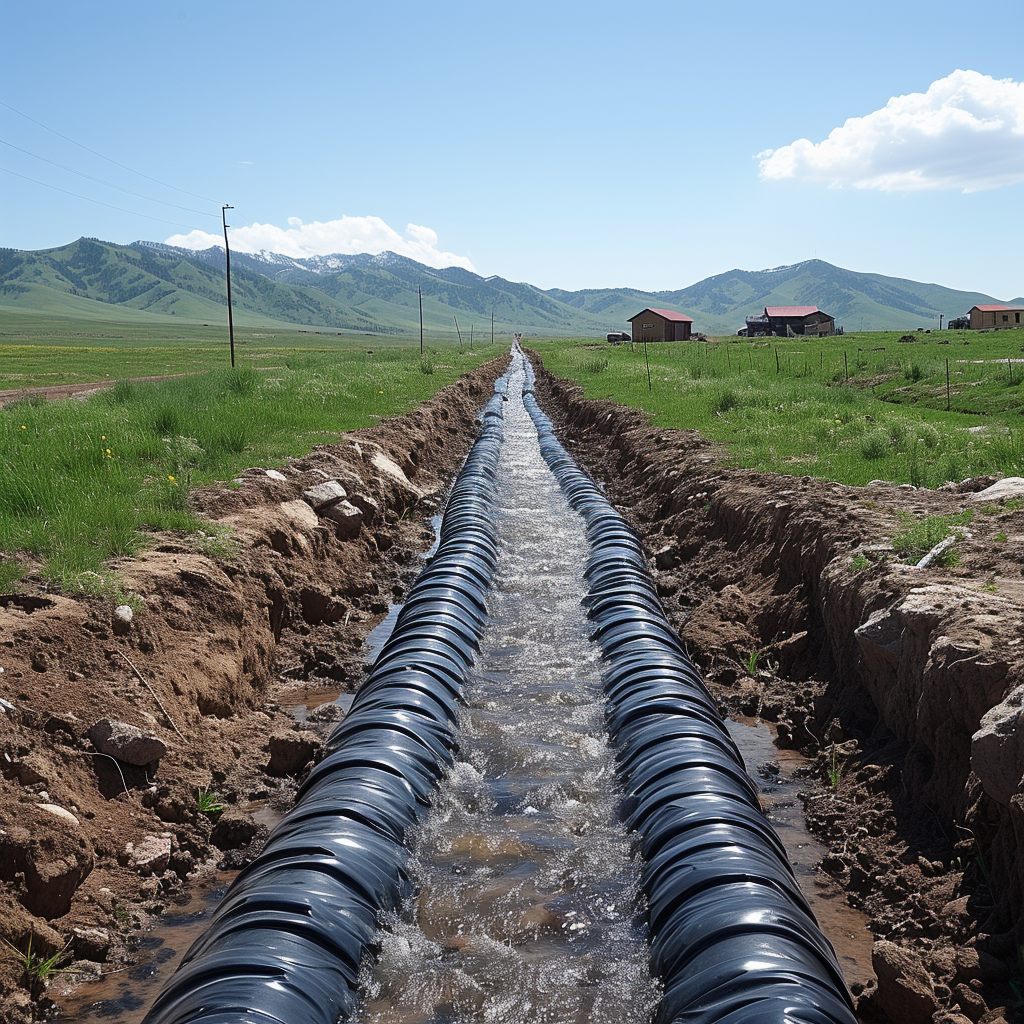
As the push for more efficient and eco-friendly waste management continues to grow, leach field technology is not spared from the tide of innovation. A new wave of advanced systems has emerged, aiming to address the limitations of traditional septic solutions. These novel methods enhance the treatment of wastewater before it ever reaches the soil, vastly improving the environmental footprint of septic systems.
Alternative Materials and Systems
Ditching the old-school approach, alternative materials and systems take center stage in modernized leach fields. It’s not just about gravel and pipes anymore; we’re seeing a plethora of substitutes entering the scene. From recycled plastic to lightweight expanded polystyrene aggregates, these materials are shifting the landscape of drainage technology. They’re easier on ol’ Mother Earth and can be a snap to install, cutting down on both labor time and costs.
Suitability for Different Environments
The terrain’s no match for these advanced setups – with versatility as a cornerstone; they’re tailored for a variety of environments. Whether you’re up against a rocky knoll or laying foundations in loamy soils, there’s a system design out there that’ll fit like a glove. Moreover, places where space is at a premium or water table levels run high are no longer off-limits; thanks to compact designs and elevated bed technologies that adapt without skipping a beat.
All in all, when it comes down to equipping your build site with an efficient waste management system, casting an eye towards these advanced and alternative leach field systems could make all the difference. After all, getting ahead of the curve could spare you quite a bit of trouble when it’s crunch time.
Frequently Asked Questions (FAQ)
Is it okay for a homeowner to flush household chemicals down their septic system?
No, it’s not advisable for homeowners to flush chemicals since they can disturb the bacteria in the tank, crucial for breaking down waste matter, potentially leading to problems with the leach field.
What should be the stance of Asphalt Paving Contractors when it comes to paving over a leach field?
Asphalt Paving Contractors should avoid paving over a leach field because it impedes wastewater infiltration, exacerbates pressure on the system and risks compromising soil filtration.
As a septic tank owner, how significant is the impact of wastewater on my property?
The impact is substantial; improper management of wastewater can result in contamination and issues with both your septic tank and the surrounding property.
Why might trenches be essential in constructing a septic tank drain field?
Trenches are vital as they house the pipes that distribute effluent from the tank to the soil; this is a key filtration step ensuring pollutants are removed before reaching groundwater.
How might Forbes Home advise a homeowner about maintaining their weeping bed aka leach bed?
‘Forbes Home’ would likely recommend routine inspections, avoiding overloading with solids, and careful plant selection overhead to ensure one’s weeping bed functions effectively.
Can variances in soil affect how a leaching field operates?
Absolutely. The type of soil directly affects infiltration and its ability to filter contaminants—key factors in a leaching field’s capability to process wastewater without causing issues.
'Shock treatment' seems like an intense approach for a leach field; what’s it all about?
‘Shock treatment’ involves introducing beneficial bacteria into leach fields to rectify an imbalance and restore optimal working order within the system after overload has occurred.
'One Biotechnology,' what do they contribute in terms of caring for a leaching bed?
‘One Biotechnology’ could offer products or services designed to enhance bacterial ecosystems within a leaching bed, which is pivotal for long-term care and preventing complications like biomat buildup.
'Home repair', 'real estate trends'; why do these seem synonymous when talking about septic systems and particularly leach fields?
Surely, because issues like leach field breakage or malfunctions that aren’t swiftly tended to can lower not only home integrity but also its market value—a fact observed in real estate trends.
Distributing lines blocked? What are some potential signs pinpointing this plumbing problem around my house?
Indicators could include soggy areas in the yard where these lines run, unusual noises from drains inside your house as well as slow draining or backups—all signs pressuring you towards repairs.

I’m Tim Robberts, a seasoned wastewater treatment & septic system expert with over 40 years of experience in the field. My career began as a septic tank installer, and I quickly gained a reputation for my attention to detail and commitment to excellence. Over the years, I’ve honed my skills in designing, installing, and maintaining septic systems for residential and commercial properties.
